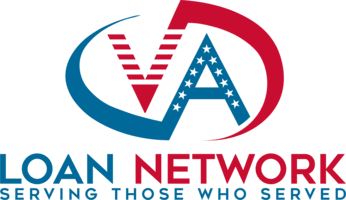Last Updated June 17th, 2025
When purchasing a home with a VA loan, one of the most critical steps in the process is ensuring the property meets the necessary standards for safety, habitability, and structural integrity.
This article provides a detailed VA home inspection checklist, helping you understand what to look for, why it’s important, and how it impacts your home purchase.
Understanding the Difference: VA Appraisal vs. Home Inspection
Before diving into the checklist, it’s crucial to differentiate between a VA appraisal and a home inspection:
- VA Appraisal: A mandatory process required by the Department of Veterans Affairs (VA) to assess the home’s value and ensure it meets the VA’s Minimum Property Requirements (MPRs). It focuses on the safety, soundness, and sanitation of the property but is not as detailed as a home inspection.
- Home Inspection: An in-depth examination of the home’s condition, performed by a professional home inspector. It identifies potential issues, from structural concerns to minor repairs, that might not be covered in the VA appraisal.
VA Home Inspection Checklist
When conducting a home inspection, whether on your own or with a professional, this checklist will guide you through the essential areas to examine. Remember, the goal is to ensure the property is not only a good investment but also a safe and comfortable place to live.
1. Foundation and Structure
- Check for Cracks: Inspect the foundation for cracks, bulges, or signs of water intrusion.
- Look for Sagging: Observe the roofline, floors, and ceilings for any sagging or uneven areas.
- Inspect Load-Bearing Walls: Ensure walls are not bowing or cracking, which could indicate structural issues.
2. Roof and Attic
- Roof Condition: Look for missing, cracked, or curling shingles. Check for any signs of leaks or damage.
- Gutters and Downspouts: Ensure gutters are securely attached and downspouts direct water away from the foundation.
- Attic Insulation: Check if the attic is properly insulated and ventilated to prevent moisture buildup.
- Pest Infestation: Look for signs of pests such as droppings, nests, or chewed materials.
3. Electrical System
- Wiring and Outlets: Ensure all outlets work correctly and that wiring is up to code. Look for exposed wires and test GFCI outlets, especially in wet areas.
- Breaker Box: Inspect the breaker box for proper labeling and ensure it’s not overloaded.
- Lighting Fixtures: Check all light switches and fixtures to ensure they function properly.
4. Plumbing System
- Water Pressure: Test all faucets for adequate water pressure and check for leaks under sinks.
- Water Heater: Inspect the water heater for rust, leaks, or other signs of wear. Ensure it heats water efficiently.
- Drainage: Check for slow drains, which might indicate a clog or bigger plumbing issue.
- Pipes: Look for signs of corrosion or damage in visible pipes, and ensure they are properly insulated in colder climates.
5. HVAC (Heating, Ventilation, and Air Conditioning)
- Furnace and AC Units: Test the heating and cooling systems to ensure they function correctly and efficiently.
- Air Ducts: Inspect ducts for dust buildup, leaks, or damage that could reduce efficiency.
- Thermostat: Ensure the thermostat works accurately and allows for temperature control throughout the home.
- Ventilation: Check that the home is well-ventilated, particularly in areas like the kitchen and bathrooms, to prevent moisture buildup.
6. Interior Spaces
- Windows and Doors: Ensure all windows and doors open and close properly, and check for drafts or broken seals.
- Floors and Ceilings: Look for signs of water damage, stains, or warping in floors and ceilings.
- Walls: Inspect walls for cracks, holes, or signs of mold, which could indicate underlying issues.
- Fireplaces: If the home has a fireplace, check the chimney for obstructions and ensure the flue opens and closes properly.
7. Kitchen and Bathrooms
- Appliances: Test all kitchen appliances to ensure they work correctly and are in good condition.
- Cabinets and Countertops: Check for loose hinges, broken drawers, or damaged countertops.
- Sinks and Toilets: Ensure sinks drain properly and toilets flush without issue. Look for signs of leaks or water damage around these fixtures.
- Ventilation: Verify that kitchen and bathroom fans are functional and vent outside the home.
8. Basement and Crawl Spaces
- Water Intrusion: Look for signs of water intrusion, such as damp spots, mold, or a musty smell in the basement or crawl spaces.
- Foundation: Check for cracks, shifts, or other signs of structural issues in the foundation walls.
- Insulation: Ensure these areas are well-insulated to prevent heat loss and moisture buildup.
9. Exterior and Landscaping
- Siding and Paint: Inspect the siding for damage, cracks, or peeling paint. These could lead to water intrusion.
- Decks and Patios: Check for loose boards, railings, or signs of rot in exterior structures like decks and patios.
- Fencing: Ensure fences are sturdy and in good condition. Look for missing or damaged panels.
- Landscaping: Evaluate the grading around the home to ensure water flows away from the foundation, preventing water damage.
10. Garage
- Garage Door: Test the garage door opener to ensure it functions properly and check for damage to the door itself.
- Electrical: Verify that the garage has sufficient outlets and that they are functioning correctly.
- Ventilation: Ensure the garage is properly ventilated to prevent the buildup of fumes or moisture.
VA Home Inspection Checklist Table
Here’s a table summarizing the key components of a VA home inspection for easy reference:
| Inspection Area | Checklist Items |
|---|---|
| Foundation & Structure | Cracks, sagging, load-bearing walls |
| Roof & Attic | Shingles, gutters, insulation, pests |
| Electrical System | Wiring, outlets, breaker box |
| Plumbing System | Water pressure, water heater, drainage |
| HVAC | Furnace, AC, ducts, thermostat |
| Interior Spaces | Windows, floors, ceilings, walls |
| Kitchen & Bathrooms | Appliances, sinks, ventilation |
| Basement & Crawl Spaces | Water intrusion, foundation, insulation |
| Exterior & Landscaping | Siding, decks, landscaping, grading |
| Garage | Door opener, electrical, ventilation |
Why a VA Home Inspection is Crucial
While the VA appraisal ensures the property meets minimum safety standards, a thorough home inspection goes deeper, helping you identify potential costly repairs down the line. It gives you a detailed understanding of the property’s condition, allowing you to negotiate repairs or reconsider your purchase if significant issues arise.
Hiring a Professional Inspector
Although you can conduct an initial inspection yourself, hiring a professional home inspector is highly recommended. They have the expertise to identify issues that might not be apparent to the untrained eye. When choosing an inspector, look for:
- Certifications: Ensure they are certified by a recognized organization such as the American Society of Home Inspectors (ASHI) or the International Association of Certified Home Inspectors (InterNACHI).
- Experience: Select an inspector with experience in the local area and knowledge of common issues in the region.
- References: Ask for references or read reviews to gauge the inspector’s reliability and thoroughness.
What Happens After the Inspection?
Once the inspection is complete, the inspector will provide a detailed report outlining their findings. Review this report carefully and discuss any concerns with your real estate agent. If the inspection reveals significant issues, you may have options such as:
- Requesting Repairs: Ask the seller to make necessary repairs before closing.
- Renegotiating the Price: If repairs are needed, you might negotiate a lower purchase price to cover the cost.
- Walking Away: If the issues are too extensive, you may choose to walk away from the deal.
Conclusion
A VA home inspection is an essential step in the home-buying process, ensuring that your new home is safe, sound, and a wise investment. By following this checklist and working with a qualified inspector, you can identify potential problems early, saving you time, money, and stress in the long run.
Whether you’re a first-time homebuyer or a seasoned veteran, a thorough home inspection provides peace of mind, allowing you to move forward confidently in your journey to homeownership.


